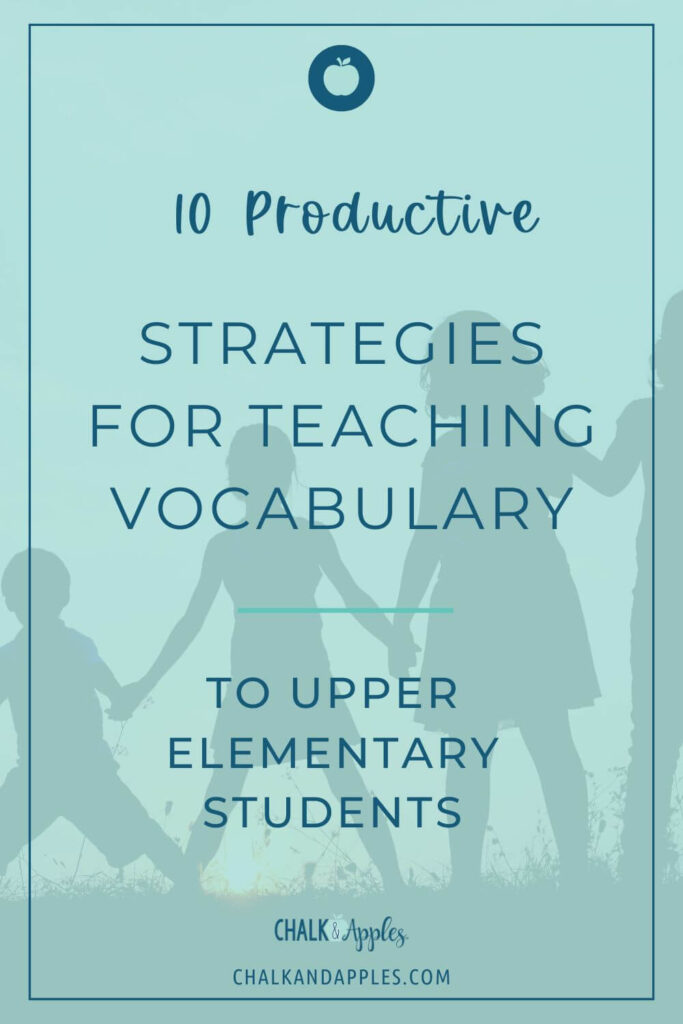
Vocabulary is the cornerstone of effective communication and comprehension. In upper elementary classrooms, expanding a student’s vocabulary is vital for academic success. Let’s explore strategies for teaching vocabulary that engage and empower both students and educators. Below is a toolkit of unique and practical ideas for your classroom.

Vocabulary refers to the words, terms, and expressions known and used by an individual or within a specific language, context, or field. It encompasses the words we use to communicate, comprehend texts, and express ideas. In upper elementary classrooms, a strong vocabulary is crucial for reading comprehension, writing skills, and overall academic achievement.
Teaching vocabulary in a fun way is the key to student success. If the worksheets and activities you plan are “boring,” they won’t want to engage. Find ways to teach them without making it apparent they are learning. Besides, learning through play is the best motivation! 😉 Check out these strategies for teaching vocabulary!
In upper elementary classrooms, vocabulary plays a pivotal role in students’ educational journey. A strong vocabulary enables students to:
By implementing these creative strategies for teaching vocabulary, educators can foster a lifelong love for words and language in their students, setting them on a path to academic excellence and effective communication. So, prepare to have a blast while enhancing your students’ vocabulary, one word at a time!

Find ready-to-go lessons, activities, and organizational tools to simplify your life and help you fall back in love with your job.
Get teaching tips, resources, and freebies delivered right to your inbox once a week!
We weren't meant to do this teaching life alone... we need each other. Join our Upper Elementary teacher community on Facebook for tips, ideas, and support from people who get it... teachers just like you!